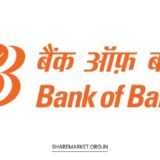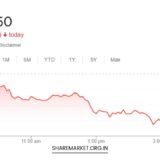Public Provident Fund (PPF) vs Fixed Deposit (FD)

Public Provident Fund (PPF) vs Fixed Deposit (FD)
Bank fixed deposits (FDs) and the Public Provident Fund (PPF) scheme are highly popular investment options that offer attractive benefits.
Making wise investment decisions is crucial for individuals, considering the range of options available. One such option is investing in bank FDs or the PPF scheme, both of which can offer substantial advantages to investors.
These investment avenues are known for their stability and security, as they are not subject to market risks. Therefore, it is essential to assess the potential profitability of investing in bank FDs and the PPF scheme.
Bank FDs provide a fixed interest rate over a predetermined period, ensuring a steady return on investment. However, the interest rates offered by banks may vary and can be influenced by market conditions.
On the other hand, the PPF scheme, backed by the government, provides a fixed interest rate that is typically higher than bank FDs. This scheme has a long-term investment horizon and offers tax benefits as well.
To determine which option is more advantageous for you, it is crucial to consider factors such as your investment goals, risk tolerance, liquidity requirements, and tax implications.
Evaluating these aspects will help you make an informed decision about whether investing in bank FDs or the PPF scheme is the most profitable option for your specific needs.
Features of PPF Scheme
The Public Provident Fund (PPF) scheme is categorized under the Small Saving Scheme and is renowned as one of the most popular government-backed investment options in India. It offers several key features that make it an attractive choice for long-term investment:
1. Interest Rate: The interest rate on PPF is revised quarterly, ensuring that it remains competitive and responsive to prevailing market conditions.
2. Long-Term Investment: The PPF scheme encourages long-term investment, making it suitable for individuals with a goal of accumulating wealth over an extended period.
3. Flexible Deposits: Investors have the flexibility to deposit their funds into the PPF account over time, allowing them to contribute regularly and steadily build their savings.
4. Minimum and Maximum Investment: The PPF scheme requires a minimum investment of Rs 500 per year, while the maximum investment allowed is Rs 1.5 lakh per year. This provides investors with the flexibility to contribute according to their financial capacity.
5. Tax Benefits: Contributions made to the PPF scheme are eligible for tax deductions under Section 80C of the Income Tax Act, up to the specified limit. Furthermore, the interest earned and maturity proceeds are also tax-free, making it an attractive option for tax planning.
6. Government-Backed Security: The PPF scheme is backed by the government of India, offering a high level of security and reliability for investors.
These features combine to make the PPF scheme an appealing investment avenue for individuals seeking long-term wealth accumulation, tax benefits, and a secure investment platform.
It is important to note that while the PPF scheme offers attractive benefits, investors should carefully assess their financial goals and consult with financial advisors to determine if it aligns with their overall investment strategy.
For How Many Days One Can Invest?
In accordance with the guidelines, investors can contribute to their PPF account for a maximum period of 15 years.
However, even after the completion of 15 years, individuals have the option to continue their PPF account on an extended basis. This flexibility allows investors to continue reaping the benefits of the scheme beyond the initial 15-year period.
One of the significant advantages of the PPF account is the tax exemption it offers. Contributions made to the PPF account are eligible for tax deductions under Section 80C of the Income Tax Act, up to the prescribed limit.
Additionally, the interest earned and the maturity proceeds from the PPF account are also tax-free, making it a tax-efficient investment option.
The PPF scheme is open to any adult Indian citizen, irrespective of their employment status. This inclusivity allows a wide range of individuals to avail themselves of the benefits provided by the scheme.
Presently, investors in the PPF scheme are enjoying an interest rate of 7.1 percent per annum. It’s important to note that the interest rate on PPF is subject to periodic revisions by the government, typically on a quarterly basis.
Hence, it’s essential to stay updated with the prevailing interest rate while considering investments in the PPF scheme.
Investors can leverage the long-term nature of the PPF account, its tax advantages, and the consistent interest rate to accumulate wealth over time and achieve their financial goals.
However, individuals are advised to consult with financial advisors or professionals to understand the specific details, benefits, and limitations of the PPF scheme, ensuring that it aligns with their financial objectives.
Bank FD
In recent days, there has been an increase in the interest rates offered on fixed deposits (FDs) by both private and government banks. Several banks are providing attractive interest rates to their customers. Here are a few examples:
1. HDFC Bank: Currently, HDFC Bank is offering a range of interest rates on fixed deposits, starting from 3 percent and going up to 7.10 percent. The specific interest rate offered depends on the duration of the fixed deposit and the amount invested.
2. Axis Bank: Axis Bank is also providing competitive interest rates on fixed deposits. The rates offered by Axis Bank range from 3.50 percent to 7.75 percent. Similar to other banks, the interest rate is dependent on factors such as the deposit tenure and the investment amount.
3. State Bank of India (SBI): SBI, one of the largest public sector banks in India, is offering interest rates ranging from 3 percent to 7 percent on fixed deposits. The actual rate applicable depends on the tenure and the amount invested.
It’s important to note that interest rates offered on fixed deposits can vary among different banks and may change periodically based on market conditions.
Therefore, it is advisable for investors to stay updated with the latest interest rates offered by banks and compare them before making investment decisions.
Individuals considering fixed deposits should carefully evaluate the interest rates, tenure options, and terms offered by various banks to determine the best option that aligns with their financial goals and risk appetite.

















